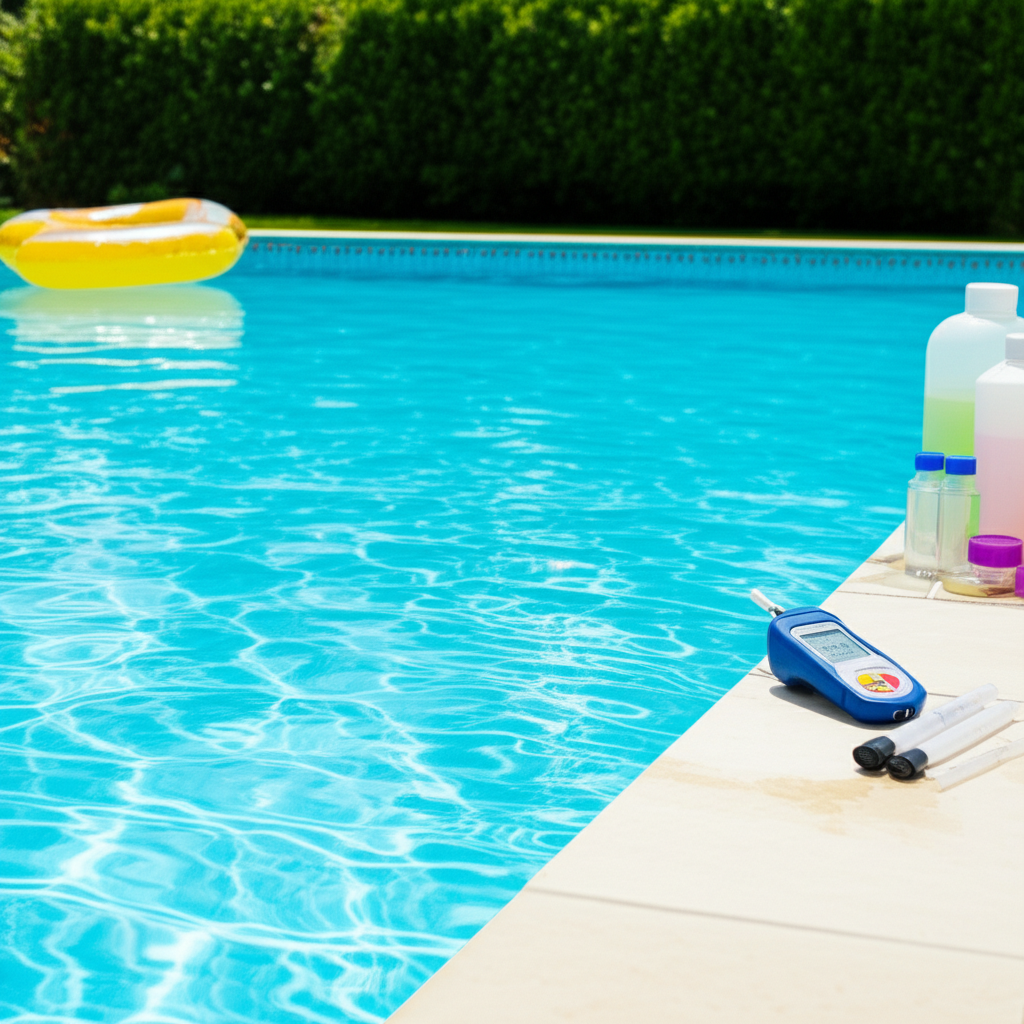- What Exactly is TDS in Pool Water?
- Why Monitoring TDS in Pool is Crucial
- Understanding the Risks of High TDS
- How to Test and Manage TDS in Pool Water
- Conclusion
TDS in Pool: Understanding and managing Total Dissolved Solids is fundamental to maintaining a healthy, clear, and efficient swimming environment. Often overlooked when compared to more common parameters like chlorine or pH, TDS plays a critical role in the overall water chemistry and longevity of your pool equipment. Ignoring elevated TDS levels can lead to a cascade of problems, impacting everything from sanitizer effectiveness to swimmer comfort. This guide will delve into what TDS is, why it matters, how to monitor it, and effective strategies for keeping it within optimal ranges.
What Exactly is TDS in Pool Water?
TDS stands for Total Dissolved Solids, representing the sum of all solid substances present in your pool water that are fully dissolved. These aren’t the particles you can filter out, like leaves or dirt; instead, they are microscopic molecules, ions, and compounds that become one with the water. The composition of TDS can be incredibly varied, including:
Minerals: Calcium, magnesium, iron, and other trace elements primarily from the source water or leached from pool surfaces.
Salts: Chlorides, sulfates, bicarbonates – especially prevalent in pools utilizing salt chlorinators or where evaporation has concentrated existing salts.
Organic Matter: Sweat, body oils, lotions, cosmetics, and other organic materials introduced by swimmers.
Chemical Residues: The byproducts of various pool chemicals (e.g., stabilizer from chlorine, algaecides, sequestering agents) that accumulate over time.
Over time, as water evaporates, new water is added, chemicals are dosed, and swimmers use the pool, these dissolved solids gradually accumulate. Unlike volatile chemicals that dissipate, TDS concentrations only increase unless diluted or removed.
Why Monitoring TDS in Pool is Crucial
Maintaining optimal TDS levels is not just about having visually appealing water; it directly impacts the efficiency of other chemicals, the health of your pool equipment, and the comfort of your swimmers. The generally accepted optimal range for traditional chlorinated pools is between 300 to 2000 parts per million (ppm), or no more than 1500 ppm above your tap water’s initial TDS level. For pools with salt chlorinators, the TDS will naturally be higher due to the dissolved salt, often ranging from 3000 to 5000 ppm. In these cases, it’s more important to monitor the increase over the initial fill level rather than hitting a specific upper limit for non-salt pools.
Here’s why it’s so important:
Sanitizer Efficiency: High TDS can reduce the effectiveness of chlorine and other sanitizers, meaning you’ll need to use more chemicals to achieve the same sanitization level. This is often referred to as increased chlorine demand.
Water Clarity & Balance: Elevated TDS can make it harder to maintain clear water, contributing to cloudiness or a dull appearance. It can also make it difficult to balance other chemical parameters like pH and alkalinity.
Corrosion and Scaling: A high concentration of dissolved solids, particularly mineral ions, can lead to scaling on pool surfaces, especially in heaters and salt cells. Conversely, specific combinations of dissolved solids can contribute to corrosive water, damaging metal components.
Swimmer Comfort: Extremely high TDS can change the taste of the water, and specific dissolved salts or minerals might cause eye or skin irritation for sensitive individuals.
Understanding the Risks of High TDS
When TDS levels climb too high, several detrimental effects can manifest in your pool. High TDS creates an environment where your pool is constantly fighting an uphill battle against water quality issues.
1. Increased Chemical Consumption: As mentioned, high TDS makes your sanitizers less effective. This translates to needing more chlorine, shock treatments, and other chemicals to maintain proper disinfection and water balance, ultimately increasing your operational costs.
2. Persistent Turbidity: Even with proper filtration and sanitation, water with very high TDS can often appear less sparkling and more “flat” or cloudy. The sheer volume of dissolved particles interferes with light reflection.
3. Equipment Damage: Mineral scale build-up—particularly calcium carbonate—is a common problem with high TDS. This scale can clog filters, reduce the efficiency of heaters, and significantly shorten the lifespan of salt chlorinator cells, leading to expensive repairs or replacements. Corrosive action from unique dissolved solids can also pit and damage metal surfaces found in pumps, heaters, and ladders.
4. Algae and Bacterial Growth: While TDS itself doesn’t directly cause algae, the conditions created by high TDS (reduced sanitizer efficiency, imbalance) can provide a more hospitable environment for algae and bacteria to thrive.
5. Difficulty in Chemical Balancing: Trying to adjust pH, alkalinity, or calcium hardness becomes more challenging and unstable when the overall TDS is excessively high. The dissolved solids act as a buffer, making the water less responsive to chemical additions.
How to Test and Manage TDS in Pool Water
Monitoring TDS is straightforward, usually requiring a simple handheld TDS meter. These devices measure the electrical conductivity of the water, which correlates directly to the concentration of dissolved ions (solids). Test your pool water regularly, perhaps monthly, to establish a baseline and track accumulation.
Once you identify an issue with high TDS, here are the most effective management strategies:
1. Partial Draining and Refilling (Dilution): This is the most common and effective method for reducing TDS in residential pools. By draining a portion of your pool water (e.g., 25-50%) and refilling it with fresh, lower-TDS tap water, you effectively dilute the concentration of dissolved solids. How much you drain depends on how high your TDS is and your target level. This significantly helps in resetting your pool’s chemical balance.
2. Backwashing Filters: While backwashing your filter removes suspended solids and debris, it has a minimal impact on dissolved solids. It primarily helps improve filtration efficiency, which indirectly supports overall water quality. However, the incidental act of adding fresh water replaces the backwashed water, thus contributing to gradual dilution.
3. Regular Pool Maintenance: Consistent skimming, vacuuming, and brushing help remove contaminants before they have a chance to dissolve. Keeping your pool clean reduces the organic load that contributes to TDS.
4. Judicious Chemical Use: Avoid over-dosing pool chemicals. Stick to manufacturer recommendations and test your water regularly to ensure you’re only adding what’s necessary. Every chemical added contributes to the overall TDS.
5. Reverse Osmosis (RO) Filtration: For commercial pools or specific situations, mobile Reverse Osmosis filtration units can be brought in to purify pool water without draining. This is a highly effective, though more expensive, method that removes virtually all dissolved solids.
Conclusion
TDS in pool water is a silent yet powerful indicator of your pool’s overall health and chemical stability. While not as frequently discussed as chlorine or pH, understanding and managing Total Dissolved Solids is crucial for preventing a host of water quality and equipment lifespan issues. By regularly testing your TDS levels and implementing proactive management strategies, primarily dilution through partial draining and refilling, you can ensure your pool remains a sparkling, balanced, and enjoyable oasis for years to come. Don’t let dissolved solids dissolve your swimming pleasure—take control of your pool’s TDS today.




